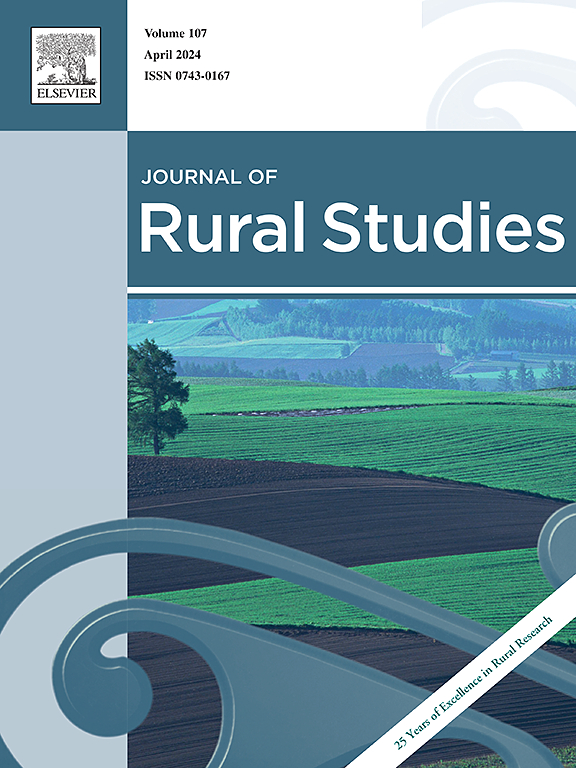从地形形态看联合国教科文组织世界遗产 "科内利亚诺和瓦尔多比亚德内的普罗塞克丘陵 "的文化景观变迁
IF 5.7
1区 社会学
Q1 GEOGRAPHY
引用次数: 0
摘要
自2019年起,"科内利亚诺和瓦尔多比亚德内的普罗塞克丘陵 "被列入联合国教科文组织世界遗产名录的 "文化景观 "类别。该研究通过空间分析和景观度量,分析了过去六十年间的土地利用和景观变化,确定了主要变化,并比较了核心区和缓冲区的异同。主要目的是确定促进传统文化景观保护的主要驱动因素,为景观规划和保护提供数据和指 示,并特别关注因最近获得联合国教科文组织认可而预计增加的旅游业带来的机遇/威胁。研究是在教科文组织遗址管理计划的框架内进行的。研究结果表明,与缓冲区相比,核心区的传统景观具有更高的完整性,这是因为地形形态的不同是主要的驱动因素。核心区粗糙的地形有助于保留传统的葡萄园,其中夹杂着小树林、线性树阵和森林斑块,因为陡峭的山坡迫使农民在土梯田上种植葡萄,因此无法在葡萄种植中引入机械化。核心区的主要变化是在陡坡和高海拔地区植树造林(占地面积的 21%),这是过去几十年牧场荒废造成的。缓冲区的主要变化是农业集约化(占地面积的 29%),原因是现代机械化葡萄园取代了传统的混合作物、草地和耕地,以及城市扩张(平均每年 10 公顷)。研究强调,尽管土地利用发生了变化,但缓冲区仍有助于保护教科文组织遗址的整体景观质量。缓冲区还可以在缓解日益增长的游客流量方面发挥潜在的关键作用,但应避免更多的城市扩张或其他现代葡萄园的蔓延。主要的长期目标应该是保护文化景观,通过采用参与式方法,实现农民、当地居民和游客的和平共处,互惠互利。本文章由计算机程序翻译,如有差异,请以英文原文为准。
Cultural landscape transformations in the "Prosecco hills of Conegliano and Valdobbiadene" UNESCO World Heritage Site in the context of terrain morphology
The "Prosecco Hills of Conegliano and Valdobbiadene" has been inscribed in the UNESCO World Heritage List since 2019 under the category “cultural landscapes”. The study analysed land use and landscape changes in the last six decades through spatial analyses and landscape metrics, identifying main changes and comparing similarities and differences between the Core and the Buffer Zone. The main aims were to identify the main drivers that contributed to the preservation of the traditional cultural landscape and to provide data and indications for landscape planning and conservation, with particular attention to the opportunities/threats due to the expected increase of tourism resulting from the recent UNESCO recognition. The study was conducted in the framework of the UNESCO site Management Plan.
Results demonstrated that the Core Zone traditional landscape has a higher level of integrity compared to the Buffer Zone, due to the different terrain morphology that represents the main driver. The rough morphology of the Core Zone contributed to the preservation of traditional vineyards interspersed with small woods, linear tree formations and forest patches, as it was not possible to introduce mechanisation in viticulture due to steep slopes that oblige farmers to cultivate vines on ciglioni (earth terraces). Core Zone's main change was due to forestation (21% of the surface) on steeper slopes and higher altitudes, caused by the abandonment of pastures that occurred in the last decades. The main transformations in the Buffer Zone were agricultural intensification (29% of the surface) due to the replacement of traditional mixed crops, meadows, and arable land with modern and mechanised vineyards, and urban sprawl (average rate of 10 ha/year). The study highlighted that despite land use changes the Buffer Zone still contributes to the conservation of the overall UNESCO site landscape quality. Buffer Zone can also have a potential key-role in mitigating the increasing tourist flows, but additional urban sprawl or the spread of other modern vineyards should be avoided. The main long-term objective should be the preservation of the cultural landscape and the peaceful coexistence of farmers, local population and tourists, with mutual benefits, by applying a participatory approach.
求助全文
通过发布文献求助,成功后即可免费获取论文全文。
去求助
来源期刊

Journal of Rural Studies
Multiple-
CiteScore
9.80
自引率
9.80%
发文量
286
期刊介绍:
The Journal of Rural Studies publishes research articles relating to such rural issues as society, demography, housing, employment, transport, services, land-use, recreation, agriculture and conservation. The focus is on those areas encompassing extensive land-use, with small-scale and diffuse settlement patterns and communities linked into the surrounding landscape and milieux. Particular emphasis will be given to aspects of planning policy and management. The journal is international and interdisciplinary in scope and content.
 求助内容:
求助内容: 应助结果提醒方式:
应助结果提醒方式:


